SSMA is a state-of-the-art deep learning fusion scheme for self-supervised multimodal semantic image segmentation, where the goal is to exploit complementary features from different modalities and assign semantic labels (e.g., car, road, tree and so on) to every pixel in the input image. SSMA is easily trainable on a single GPU with 12 GB of memory and has a fast inference time. SSMA achieves state-of-the-art multimodal semantic segmentation performance on Cityscapes, Synthia, ScanNet, SUN RGB-D and Freiburg Forest datasets.
This repository contains our TensorFlow implementation of SSMA which allows you to train your own model on any dataset and evaluate the results in terms of the mean IoU metric.
If you find the code useful for your research, please consider citing our paper:
@article{valada19ijcv,
author = {Valada, Abhinav and Mohan, Rohit and Burgard, Wolfram},
title = {Self-Supervised Model Adaptation for Multimodal Semantic Segmentation},
journal = {International Journal of Computer Vision (IJCV)},
year = {2019},
month = {jul},
doi = {10.1007/s11263-019-01188-y},
note = {Special Issue: Deep Learning for Robotic Vision},
issn = {1573-1405},
day = {08}}
}
http://deepscene.cs.uni-freiburg.de
| Dataset | Modality1 | Modality2 | Segmented Image |
|---|---|---|---|
| Cityscapes | 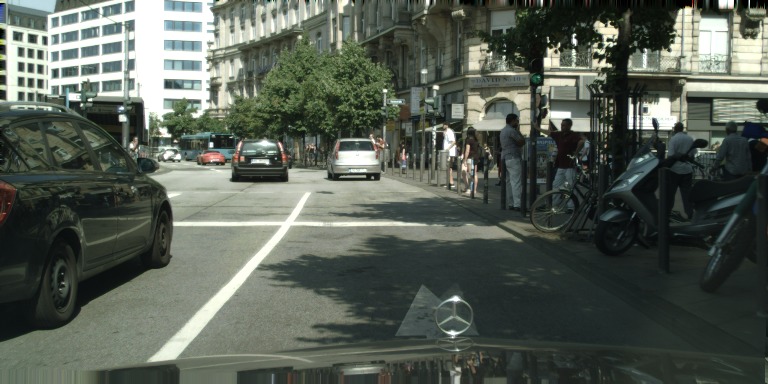 |
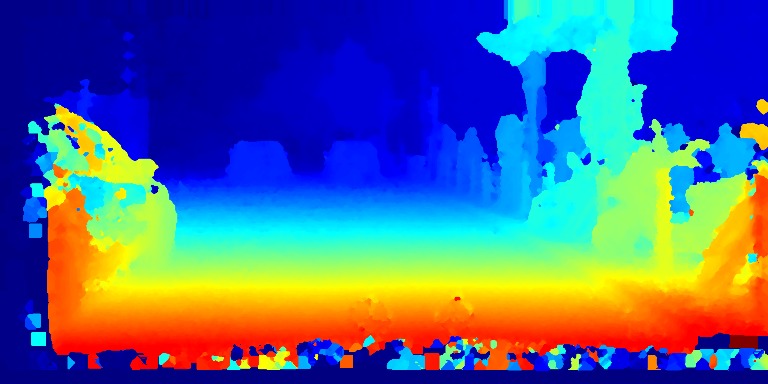 |
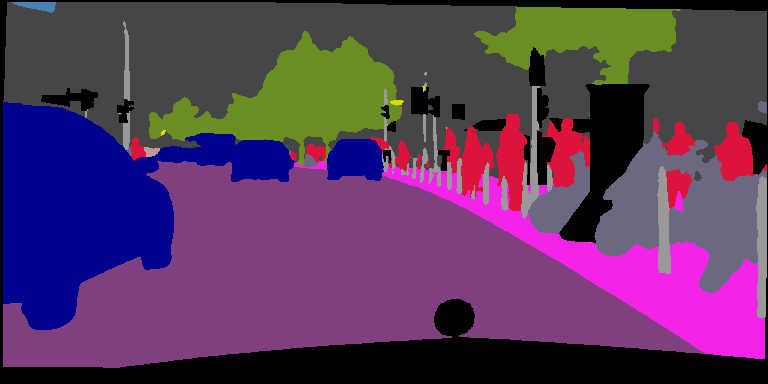 |
| Forest | 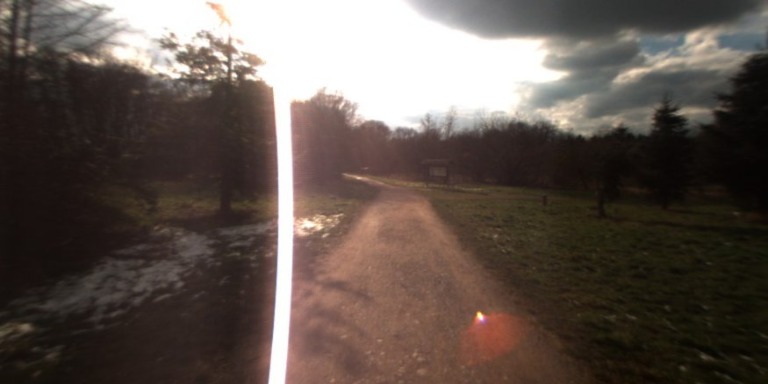 |
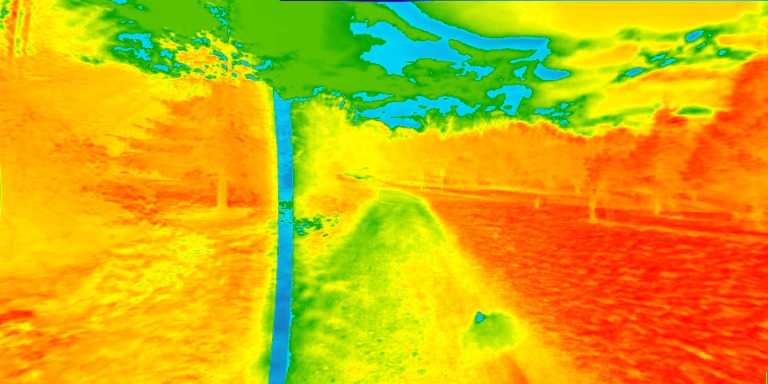 |
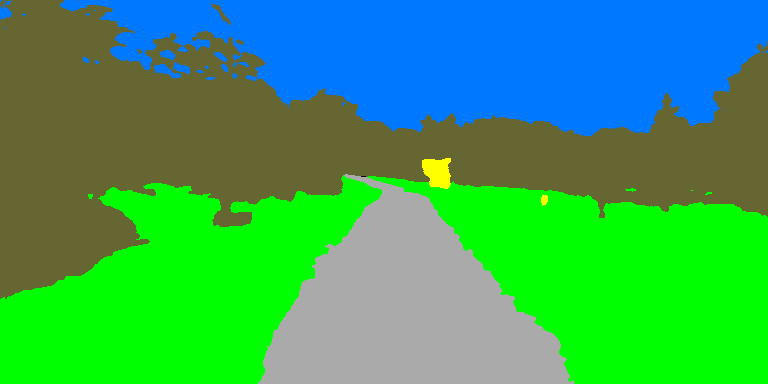 |
| Sun RGB-D | 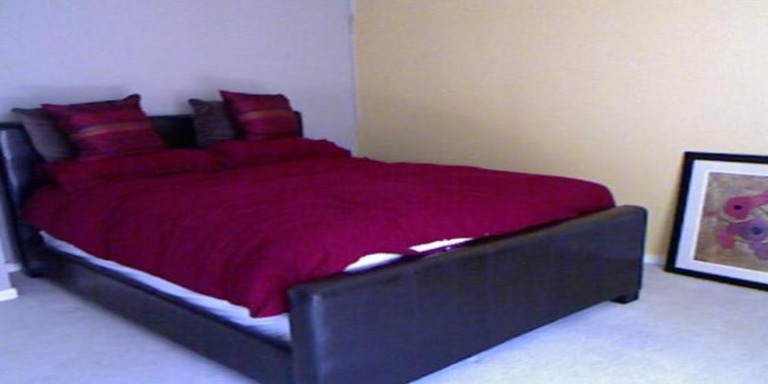 |
 |
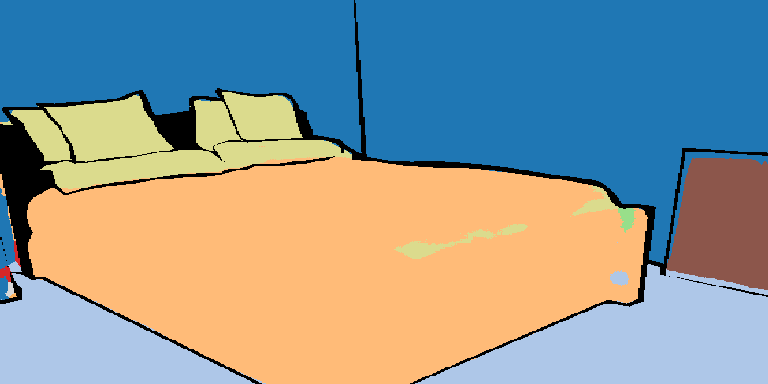 |
| Synthia | 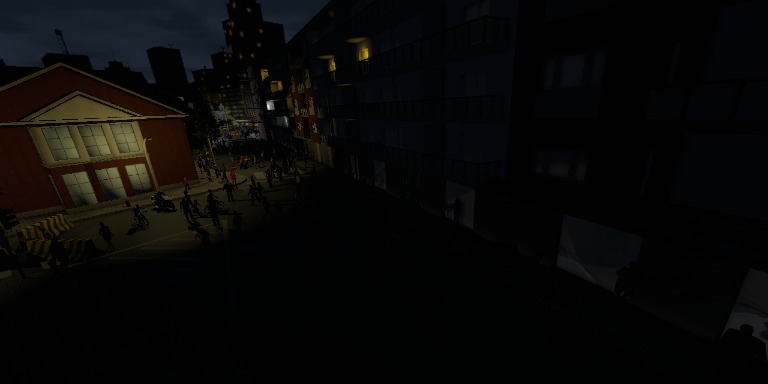 |
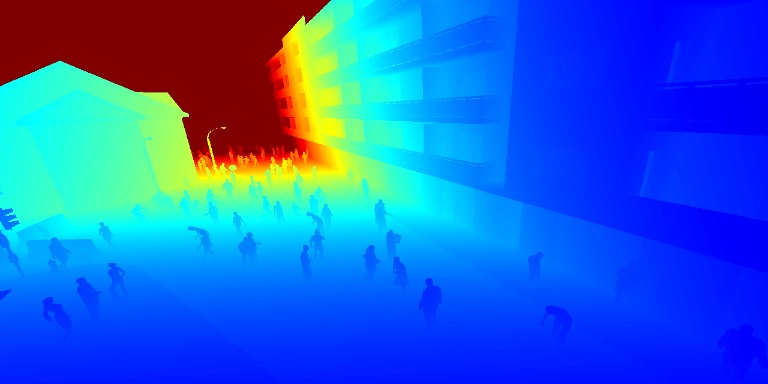 |
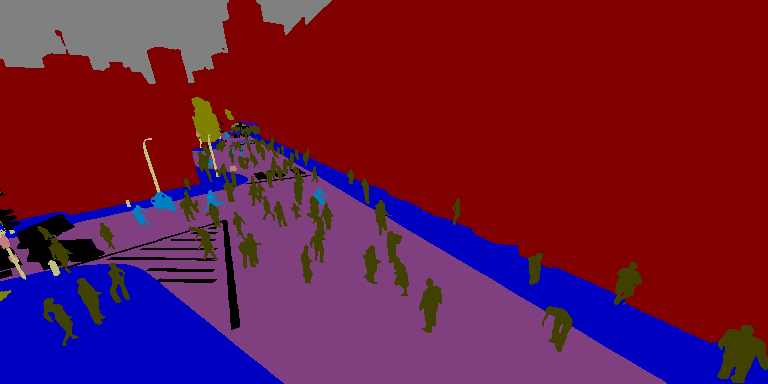 |
| ScanNet v2 | 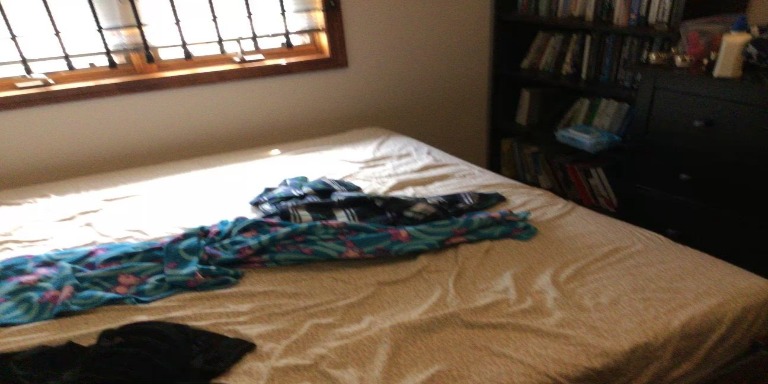 |
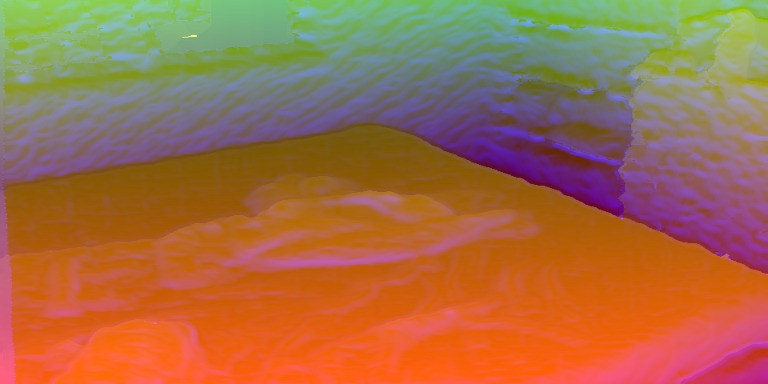 |
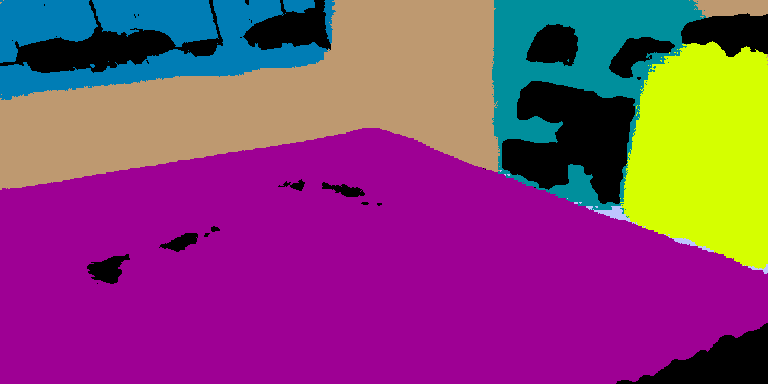 |
Python 2.7
tensorflow-gpu 1.4.0
First train an individual AdapNet++ model for modality 1 and modality 2 in the dataset. We will use this pre-trained modality-secific models for initializing our SSMA network.
-
Augment the training data. In our work, we first resized the images in the dataset to 768x384 pixels and then apply a series of augmentations (random_flip, random_scale and random_crop). The image corresonding to each modality and the label should be augmented together using the same parameters.
-
Convert the training data (augmented), test data and validation data into the .tfrecords format. Create a .txt file for each set having entries in the following format:
path_to_modality1/0.png path_to_modality2/0.png path_to_label/0.png path_to_modality1/1.png path_to_modality2/1.png path_to_label/1.png path_to_modality1/2.png path_to_modality2/2.png path_to_label/2.png ...
Run the convert_to_tfrecords.py from dataset folder for each of the train, test, val sets to create the tfrecords:
python convert_to_tfrecords.py --file path_to_.txt_file --record tf_records_name
(Input to model is in BGR and 'NHWC' form)
gpu_id: id of gpu to be used
model: name of the model
num_classes: number of classes
checkpoint1: path to pre-trained model for modality 1 (rgb)
checkpoint2: path to pre-trained model for modality 2 (jet,hha,evi)
checkpoint: path to save model
train_data: path to dataset .tfrecords
batch_size: training batch size
skip_step: how many steps to print loss
height: height of input image
width: width of input image
max_iteration: how many iterations to train
learning_rate: initial learning rate
save_step: how many steps to save the model
power: parameter for poly learning rate
gpu_id: id of gpu to be used
model: name of the model
num_classes: number of classes
checkpoint: path to saved model
test_data: path to dataset .tfrecords
batch_size: evaluation batch size
skip_step: how many steps to print mIoU
height: height of input image
width: width of input image
Please refer our paper for the dataset preparation procedure for each modality and the training protocol to be employed.
Edit the config file for training in config folder. Run:
python train.py -c config cityscapes_train.config or python train.py --config cityscapes_train.config
Select a checkpoint to test/validate your model in terms of the mean IoU. Edit the config file for evaluation in config folder.
python evaluate.py -c config cityscapes_test.config or python evaluate.py --config cityscapes_test.config
- All the models were trained with the full input_image and labels resized to 768x384 resolution.
- mIoU indicates the single scale evaluation on the val set of each dataset where input_image and labels were resized to 768x384 resolution.
- The mIoU of model checkpoints provided might slightly differ from the results reported in the paper.
| Modality1_Modality2 | mIoU |
|---|---|
| RGB_Depth | 82.29 |
| RGB_HHA | 82.64 |
| Modality1_Modality2 | mIoU |
|---|---|
| RGB_Depth | 91.25 |
| Modality1_Modality2 | mIoU |
|---|---|
| RGB_Depth | 43.9 |
| RGB_HHA | 44.3 |
| Modality1_Modality2 | mIoU |
|---|---|
| RGB_Depth | 66.29 |
| RGB_HHA | 66.34 |
| Modality1_Modality2 | mIoU |
|---|---|
| RGB_Depth | 83.81 |
| RGB_EVI | 83.9 |
- mIoU_val: Evaluation results on the full resolution val set (all semantic classes) as reported by the corresponding methods.
- mIoU_test: Evaluation results from the benchmarking server on the full resolution test set (all semantic classes).
- Params: Computed using the official implementation of each method.
- Time: Inference time computed on an NVIDIA TITAN X (PASCAL) GPU using the official implementation of each method for an input image resolution of 768x384 pixels.
| Method | Backbone | mIoU_val (%) | mIoU_test (%) | Params (M) | Time (ms) |
|---|---|---|---|---|---|
| DRN | WideResNet-38 | 79.69 | 82.82 | 129.16 | 1259.67 |
| DPC | Modified Xception | 80.85 | 82.66 | 41.82 | 144.41 |
| SSMA | ResNet-50 | 82.19 | 82.31 | 56.44 | 101.95 |
| DeepLabv3+ | Modified Xception | 79.55 | 82.14 | 43.48 | 127.97 |
| Mapillary | WideResNet-38 | 78.31 | 82.03 | 135.86 | 214.46 |
| Adapnet++ | ResNet-50 | 81.24 | 81.34 | 30.20 | 72.94 |
| DeepLabv3 | ResNet-101 | 79.30 | 81.34 | 58.16 | 79.90 |
| PSPNet | ResNet-101 | 80.91 | 81.19 | 56.27 | 172.42 |
| Method | mIoU_test (%) |
|---|---|
| SSMA | 57.7 |
| FuseNet | 52.1 |
| Adapnet++ | 50.3 |
| 3DMV (2d proj) | 49.8 |
| ILC-PSPNet | 47.5 |
- We provide SSMA fusion implementation for AdapNet++ as the expert network architecture. You can swap Adapnet++ with any network of your choice by modifying the models/ssma_helper.py script.
- We only provide the single scale evaluation script. Multi-Scale+Flip evaluation further imporves the performance of the model.
- The code in this repository only performs training on a single GPU. Multi-GPU training using synchronized batch normalization with larger batch size further improves the performance of the model.
- Initializing the model with pre-trained weights from large datasets such as the Mapillary Vistas and BDD100K yields an improved performance.
For academic usage, the code is released under the GPLv3 license. For any commercial purpose, please contact the authors.





